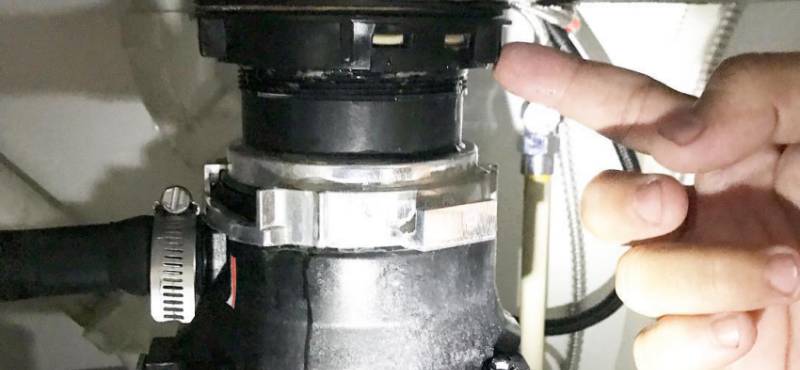Step-by-Step Techniques for Repairing a Leaky Garbage Disposal
Step-by-Step Techniques for Repairing a Leaky Garbage Disposal
Blog Article
We have come across the article relating to The Handy Guide To Fixing Your Garbage Disposal Leaking down the page on the web and reckoned it made perfect sense to write about it with you on this site.

Garbage disposals are vital kitchen area home appliances that assist in throwing away food waste effectively. Nevertheless, a leaking waste disposal unit can be an irritating and untidy problem to manage. The good news is, several leakages can be repaired conveniently with a few simple actions. In this article, we will certainly discuss just how to deal with a leaking waste disposal unit effectively.
Intro
Garbage disposals are set up under cooking area sinks and are designed to shred food waste into smaller sized pieces, permitting it to pass through the plumbing system conveniently. While these tools are generally trustworthy, leakages can take place over time due to wear and tear, loose connections, or damages to the device.
Usual Root Causes Of Leaks in Garbage Disposals
Worn Seals and Gaskets
Seals and gaskets play a crucial duty in preventing water from leaking out of the garbage disposal. Over time, these components can wear away, bring about leakages around the disposal system.
Loose Connections
The links between the garbage disposal and the pipes system can end up being loosened over time, triggering water to leak out throughout operation.
Splits or Holes in the Disposal Unit
Physical damages to the garbage disposal, such as splits or holes in the real estate, can likewise cause leaks.
Determining the Resource of the Leak
Prior to attempting to take care of a dripping garbage disposal, it is vital to identify the source of the leak. This can commonly be done through visual examination or by conducting easy examinations.
Visual Examination
Evaluate the garbage disposal device carefully for any indications of water leakage. Pay very close attention to areas around seals, gaskets, and connection points.
Evaluating for Leaks
One way to examine for leaks is by running water with the disposal unit and checking for any kind of visible indications of leak.
Tools and Materials Needed for Taking Care Of a Dripping Garbage Disposal
Before starting the fixing process, gather the needed devices and materials, including a screwdriver, flexible wrench, plumbing's putty, replacement seals or gaskets, and epoxy or patching product for fixing splits or openings.
Step-by-Step Overview to Dealing With a Dripping Waste Disposal Unit
Turn Off the Power
Before attempting any type of fixings, make certain that the power to the waste disposal unit system is turned off to prevent the danger of electrical shock.
Find the Leakage
Identify the exact location of the leak and identify the cause.
Tighten up Links
Utilize a wrench to tighten any kind of loose connections in between the disposal system and the plumbing system.
Change Seals or Gaskets
If the leak results from used seals or gaskets, remove the old parts and replace them with new ones.
Patching Splits or Holes
For splits or holes in the disposal system, usage epoxy or a suitable patching material to secure the damaged location.
Examining the Waste Disposal Unit After Repair Service
As soon as the fixing is complete, examine the waste disposal unit by running water via it to ensure that the leakage has been resolved.
Preventive Upkeep Tips to Prevent Future Leakages
To avoid future leakages, it is vital to carry out normal maintenance on your waste disposal unit. This includes keeping it tidy, avoiding putting non-food things or hard items down the disposal, and occasionally checking for leakages or other problems.
Verdict
In conclusion, taking care of a dripping garbage disposal is a fairly uncomplicated procedure that can be finished with basic devices and products. By adhering to the steps outlined in this post and exercising preventative upkeep, you can maintain your garbage disposal in good working condition and stay clear of pricey repair services in the future.
HERE’S HOW TO FIX YOUR GARBAGE DISPOSAL
WHAT TO DO IF SOMETHING IS STUCK IN YOUR GARBAGE DISPOSAL
If the impeller won’t turn, there’s probably something stuck in the disposal. It could be a steak bone or peach pit, although plumbers report pulling all sorts of inappropriate objects out of disposals, such as bottle caps or aluminum foil. Make sure power to the disposal is off, and look inside to see if you can see the source of the jam.
Never stick your fingers in a disposal. Pull out anything you see with tongs or pliers.
If the disposal still won’t work, it may be time to call a plumber or consider buying a new disposal. GEM Plumbing & Heating is here for all of your garbage disposal needs.
WHAT TO DO IF YOUR GARBAGE DISPOSAL DRAIN IS CLOGGED
Take everything out from underneath your sink and put a bucket or other container under your disposal to catch any water that drains out. Disconnect your disposal from the power supply. If it’s plugged into a wall outlet, unplug it. If it’s hardwired into an electrical box, go to the electrical panel and turn off the breaker for the disposal. Pour ¼ cup of baking soda into the drain, followed by ½ cup of white vinegar. Give the solution a few minutes to fizz and do its work. Look into the disposal with a flashlight to see if you can see an object that might be causing the clog. If you see it, remove it using tongs or pliers. MORE TIPS ON DEALING WITH A CLOGGED GARBAGE DISPOSAL
Never use drain cleaner in a garbage disposal. It can damage the plastic parts inside the disposal. You can also be splashed with the caustic liquid while working to clear the clog. Beware! Never stick your fingers into a garbage disposal. Trust us — not a good idea. In many instances, your dishwasher drains through your garbage disposal. This allows the disposal to grind any large food particles that may be drained out of your dishwasher. There are some jurisdictions, however, where the plumbing code prohibits such a connection. WHAT TO DO WHEN YOUR DISHWASHER DRAINS THROUGH THE DISPOSAL
Run some water in the sink so your plunger has at least a ½-inch of water to create a seal and plunge vigorously up and down several times. You may need to repeat this several times. Run hot water down the drain to clear any residue that remains.

As a devoted reader on Why Is My Garbage Disposal Leaking From the Bottom?, I figured sharing that excerpt was a good thing. Sharing is nice. Helping others is fun. Thank-you for your time invested reading it.
Call Today Report this page